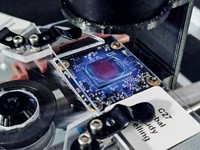Advertisement
Grab your lab coat. Let's get started
Welcome!
Welcome!
Create an account below to get 6 C&EN articles per month, receive newsletters and more - all free.
It seems this is your first time logging in online. Please enter the following information to continue.
As an ACS member you automatically get access to this site. All we need is few more details to create your reading experience.
Not you? Sign in with a different account.
Not you? Sign in with a different account.
ERROR 1
ERROR 1
ERROR 2
ERROR 2
ERROR 2
ERROR 2
ERROR 2
Password and Confirm password must match.
If you have an ACS member number, please enter it here so we can link this account to your membership. (optional)
ERROR 2
ACS values your privacy. By submitting your information, you are gaining access to C&EN and subscribing to our weekly newsletter. We use the information you provide to make your reading experience better, and we will never sell your data to third party members.
Analytical Chemistry
A LEGO-Like Microarray
Portable Screening: Researchers develop portable microarray for high-throughput screening that doesn't need a robot
by Sarah Webb
April 19, 2011
Although high-throughput screening provides a powerful means to evaluate drug candidates, the expense of sophisticated facilities and robots limits access to its techniques. Now researchers demonstrate a simple and cheap polymer-based benchtop microarray that doesn't need a robot to deliver compounds (Anal. Chem., DOI: 10.1021/ac200267t)
The new technique, developed by Ali Khademhosseini of Harvard University and his colleagues, delivers compounds through a layer of porous hydrogel to an underlying array of microwells. Like a LEGO piece, the hydrogel layer contains bumps that can fit into individual microwells. When the hydrogel interlocks with the microwell array, the bumps slowly release into the wells compounds to be screened.
The researchers tested their method with MCF-7 breast cancer cells. They produced an array with 2,100 polymer microwells on a standard microscope slide. They then used standard techniques to construct the compound-filled bumps on the hydrogel. After allowing the two layers to sit together for 12 hours, the scientists removed the hydrogel and treated the cells with fluorescently-labeled molecules to quantify the ratio of apoptosis, or programmed cell death, versus necrosis in these samples.
At only $1 to $2 per chip, the technique offers high-throughput screening at much lower cost than conventional methods, says Khademhosseini. He and his colleagues want to adapt the technology to personalized medicine and diagnostics. "We'd like for people to be able to take a drop of blood or saliva and do a variety of medical screens," Khademhosseini says. In another step toward portable diagnostics, the researchers have recently used a webcam with a similar screening system to observe "beating" cardiomyocytes. (Lab Chip, DOI: 10.1039/c1lc20098d).




Join the conversation
Contact the reporter
Submit a Letter to the Editor for publication
Engage with us on Twitter